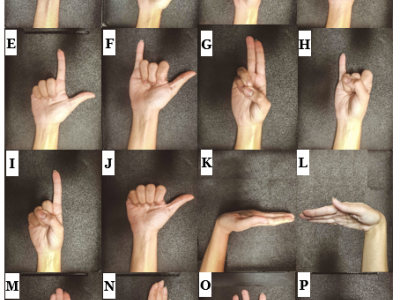Biometrics

The B2F dataset (Biometric images of Fingerprints and Faces) has been prepared for face and fingerprint recognition, verification or classification.
The first subset (Fingerprint): This set of data presents the five finger feature vectors (of the left hand) for each person in a csv files.
The second subset (Face): This set of data presents feature vectors of face images in csv files. Feature vectors were extracted using the model (ResNet-50 + ArcFace). This set of face feature vectors represents:
- Categories:
 817 Views
817 ViewsThis research proposes a method to detect alcohol consumption from Near-Infra-Red (NIR) periocular eye images. The study focuses on determining the effect of external factors such as alcohol on the Central Nervous System (CNS). The goal is to analyse how this impacts on iris and pupil movements and if it is possible to capture these changes with a standard iris NIR camera. This paper proposes a novel Fused Capsule Network (F-CapsNet) to classify iris NIR images taken under alcohol consumption subjects.
- Categories:
 867 Views
867 ViewsRecently, surface electromyogram (EMG) has been proposed as a novel biometric trait for addressing some key limitations of current biometrics, such as spoofing and liveness. The EMG signals possess a unique characteristic: they are inherently different for individuals (biometrics), and they can be customized to realize multi-length codes or passwords (for example, by performing different gestures).
- Categories:
 2291 Views
2291 ViewsRecently, surface electromyography (sEMG) emerged as a novel biometric authentication method. Since EMG system parameters, such as the feature extraction methods and the number of channels, have been known to affect system performances, it is important to investigate these effects on the performance of the sEMG-based biometric system to determine optimal system parameters.
- Categories:
 1370 Views
1370 Views"The friction ridge pattern is a 3D structure which, in its natural state, is not deformed by contact with a surface''. Building upon this rather trivial observation, the present work constitutes a first solid step towards a paradigm shift in fingerprint recognition from its very foundations. We explore and evaluate the feasibility to move from current technology operating on 2D images of elastically deformed impressions of the ridge pattern, to a new generation of systems based on full-3D models of the natural nondeformed ridge pattern itself.
- Categories:
 2202 Views
2202 ViewsThis is a collection of paired thermal and visible ear images. Images in this dataset were acquired in different illumination conditions ranging between 2 and 10700 lux. There are total 2200 images of which 1100 are thermal images while the other 1100 are their corresponding visible images. Images consisted of left and right ear images of 55 subjects. Images were capture in 5 illumination conditiond for every subjects. This dataset was developed for illumination invariant ear recognition study. In addition it can also be useful for thermal and visible image fusion research.
- Categories:
 485 Views
485 ViewsiSignDB: A biometric signature database created using smartphone
Suraiya Jabin, Sumaiya Ahmad, Sarthak Mishra, and Farhana Javed Zareen
Department of Computer Science, Jamia Millia Islamia, New Delhi-110025, India
It's a database of biometric signatures recorded using sensors present in a smartphone. The dataset iSignDB is created to implement a novel anti-spoof biometric signature authentication for smartphone users.
- Categories:
 1052 Views
1052 ViewsThis dataset is composed of 4-Dimensional time series files, representing the movements of all 38 participants during a novel control task. In the ‘5D_Data_Extractor.py’ file this can be set up to 6-Dimension, by the ‘fields_included’ variable. Two folders are included, one ready for preprocessing (‘subjects raw’) and the other already preprocessed ‘subjects preprocessed’.
- Categories:
 300 Views
300 ViewsWe provide a large benchmark dataset consisting of about: 3.5 million keystroke events; 57.1 million data-points for accelerometer and gyroscope each; and 1.7 million data-points for swipes. Data was collected between April 2017 and June 2017 after the required IRB approval. Data from 117 participants, in a session lasting between 2 to 2.5 hours each, performing multiple activities such as: typing (free and fixed text), gait (walking, upstairs and downstairs) and swiping activities while using desktop, phone and tablet is shared.
- Categories:
 9599 Views
9599 Views






